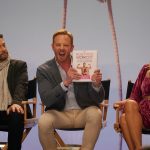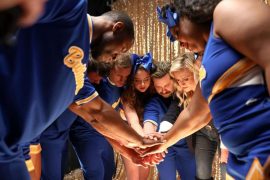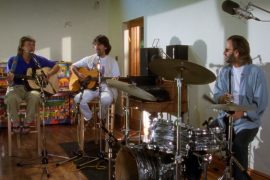
Think you know all there is to know about Woodstock? Think again, doobie breath.
American Experience: Woodstock: Three Days that Defined a Generation premieres Tuesday, Aug. 6 at 9 p.m. on PBS. The two-hour documentary retraces the path leading to the live concert festival that blew everybody’s mind in 1969, 50 years ago this month.
Certainly this story has been told before. There was the 1970 documentary directed by Michael Wadleigh that was primarily focused on the music acts. There was the accompanying LP that sold millions.
The sheer number of bands and solo musicians who played the fest was impressive, but the fact that so many of them were on the threshold of music stardom was just one of those magical, lightning in a bottle moments. The Who, Jimi Hendrix, Joe Cocker, Crosby, Stills and Nash, Janis Joplin, The Grateful Dead, Sly & the Family Stone, Santana… the list goes on and on.
I was a wee lad of 12 that summer and my parents would barely let me wander off to Cloverdale Mall by myself, let alone Yasgur’s farm. In three years I’d be working as a busboy at Ontario Place sneaking into shows featuring Chuck Berry, The Guess Who and Chicago. In ’69, however, the best I could hope for was an ice show.
This new documentary tells the story behind the story of Woodstock. The festival’s staff and producers are interviewed, including Donald Goldmacher, Carol Green, Michael Lang, John Morris and activist “Wavy Gravy.” The latter led his posse of blissed-out hippies into the throngs who made the pilgrimage to Bethal, N.Y. and somehow managed to maintain order.
advertisement
Nobody expected over 400,000 to show up for the music festival. As one eye-witness says in the documentary, “It was like a field with people growing in it. I’d never seen that many people in one place at one time.”
The fest seemed to have a momentum all its own despite many setbacks that derailed similar fests, including the 50th anniversary one planned for this summer. The organizers had to scramble for a new venue after the town council at the original site got the jitters and voted to ban gatherings of more than five thousand people. This happened six weeks before the festival, with hundreds of thousands already spent building stages and erecting barriers.
The successful dairy farmer who saved the day by offering a few hundred acres a little further upstate was, we are told, a law and order Republican. Max Yasgur, however, also was a firm believer in freedom of expression, and so the event marched on.
Still, by this point, there simply wasn’t enough time to provide enough port-a-potties, food stands and, critically, a fence around the fields. While many tickets had already been sold, tens of thousands, many who showed up a week ahead of schedule, just walked in and squatted onto the fields. The stage for the performers was being built through the night. Food handlers — many teenagers — had to errect their own food stands. The organizers lost their shirts.

Award-winning writer/director Barak Goodman (“Oaklahoma City,” “My Lai”) makes the most of the ’60s music heard in the documentary, working, “We Have Got to Get it Together,” for example, into scenes showing the organizers scrambling to make it all happen.
The festival is also well placed in the context of the times. This was a generation searching for something to believe in after the assassinations of Martin Luther King and Robert Kennedy. The reality many in the crowd faced was that if they dropped out of college, they were going to Vietnam.
“The only thing we took solace in was music,” another voice proclaims — an apt cue for Buffalo Springfield’s “Stop” to start playing.
It’s also fascinating to see how this festival went “viral” long before that phrase was coined. The engines of promotion may have been old fashioned but clearly were effective. This was an age when Rolling Stone magazine or The Village Voice had all the muscle of Facebook or Instagram.
It was sold as three days of peace and music. It ended up being a wet, muddy weekend, on- and -off, but, for one golden summer at least, there really was a beautiful truce in America. A generation united under a freaky rendition of “The Star Spangled Banner” and got by with a little help from their friends. As another witness puts it in the documentary, “It was like visiting the world you were dreaming of, if you were a young person.”
Rating: ****






